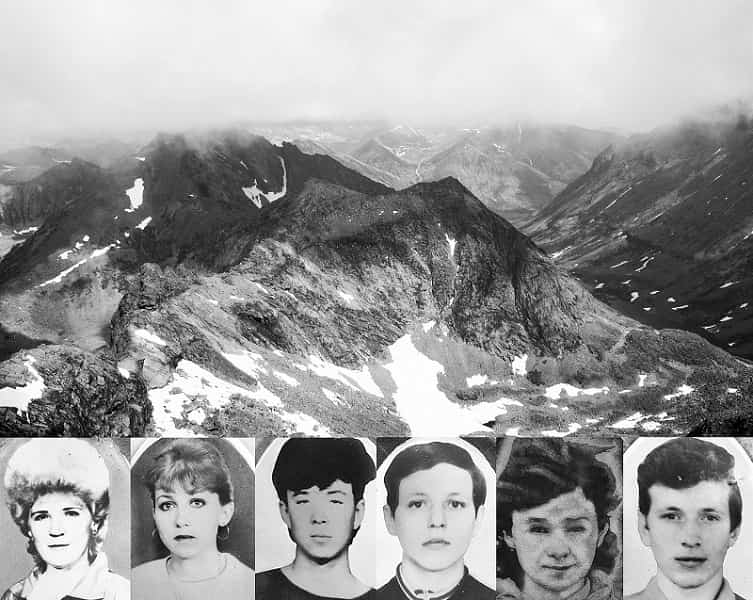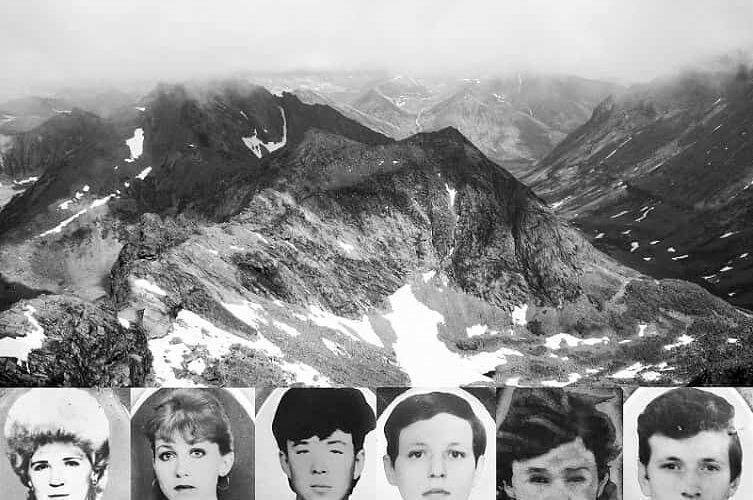khamar daban incident: Horror In The Mountains

In the summer of 1993, a group of experienced hikers led by Lyudmila Korovina, a 41-year-old survival expert and hiking instructor, embarked on what was supposed to be a routine trek through the Khamar Daban mountain range in Siberia.
Known for her survival skills and respected by her students, Lyudmila was confident in her ability to lead the group safely. However, the journey took a dark and mysterious turn, leaving only one survivor and raising questions that remain unanswered to this day.
The Hiking Group and Their Journey
Lyudmila Korovina was accompanied by six of her best students, all of whom were familiar with the area and had some hiking experience. The group included:
- Aleksander (Sacha) Krysin, 23
- Timur Bapanov, 15
- Viktoriya Zalesova, 16
- Valentina Utochenko, 17
- Tatyana Filipenko, 24
- Denis Shvachkin, 19
The Khamar Daban mountain range was a popular hiking destination, known for its scenic beauty and relatively safe trails. The group arrived on August 2, 1993, excited to begin their adventure. The weather forecast promised clear skies, and the first two days of the hike went smoothly. However, things took a turn for the worse on August 4.
The Weather Turns Deadly
As the group began their descent, the weather took an unexpected turn. Heavy rains drenched the hikers, soaking their supplies and slowing their progress. Despite the availability of nearby tree cover, Lyudmila decided to set up camp in an open area, likely due to the group’s exhaustion. That night, they struggled to light a fire but remained in good spirits. The next morning, they managed to start a campfire, shared breakfast, and prepared to continue their journey.
Unbeknownst to them, Lyudmila’s daughter, Natalia, who was also a mountain guide, had reached a rendezvous point with her own group. When Lyudmila and her students failed to show up, Natalia assumed they had been delayed by the bad weather. Little did she know that her mother and the group were facing a far more sinister fate.
The Tragic Discovery
On August 10, a group of kayakers paddling down a river at the base of the Khamar Daban mountains noticed a lone girl standing near the tree line. As they approached, they realized she was covered in blood and visibly distressed. The girl, Valentina Utochenko, burst into tears and claimed to be the only survivor of her hiking group. The kayakers immediately took her to the local police station, where it took her several days to recount the horrifying events that had unfolded.
Valentina’s Harrowing Account
According to Valentina, the group had begun their descent after breakfast when something strange happened. Sacha, who was at the back of the group, suddenly started screaming. When the others turned to look, they saw him foaming at the mouth and bleeding from his eyes and ears. He collapsed to the ground, convulsing. Lyudmila rushed to his aid, instructing the others to continue and find help.
As Lyudmila tried to revive Sacha, she too began to show the same symptoms—bleeding from her eyes and nose, foaming at the mouth, and shaking uncontrollably. Tatyana, the first to reach Lyudmila, also began to experience similar symptoms. She clutched her throat as if struggling to breathe, then ran to a nearby rock and repeatedly banged her head against it until she lost consciousness.
Denis, Timur, and Viktoriya tried to flee but collapsed while running, tearing their clothes, coughing up blood, and clawing at their throats. Denis also collapsed shortly after. In a state of panic, Valentina fled the scene, leaving her friends behind with only a tent and the clothes on her back. She spent the next four days following power lines and a river, hoping to find help. Eventually, she was discovered by the kayakers who rescued her.
The Investigation and Autopsy Findings
A police report was filed, but no formal search was conducted until August 24. The autopsy report revealed that all the hikers, except Lyudmila, had died of hypothermia. Lyudmila had suffered a heart attack. The report also noted that the hikers had bruised lungs, but the official cause of death was determined to be a protein deficiency resulting from starvation and extreme hypothermia. The deaths were ruled accidental, despite the fact that the group had been well-fed and sheltered.
Theories Behind the Tragedy
The bizarre and gruesome nature of the hikers’ deaths has led to several theories, none of which have been definitively proven.
Chemical Weapons or Nerve Agents
Some researchers believe the hikers may have been exposed to chemical weapons or nerve agents. Symptoms like convulsions, foaming at the mouth, and bleeding from the eyes are consistent with nerve toxin exposure. Bruised lungs, as noted in the autopsy, are also a common sign of death from nerve gas. Lake Baikal, located nearby, has been a site for toxic waste disposal, raising the possibility that the hikers ingested contaminated water or were exposed to chemicals during the heavy rain.
Toxic Mushrooms
Another theory suggests that the group may have accidentally consumed toxic mushrooms. Lyudmila was known to be skilled in foraging, and it’s possible that one of the hikers picked a poisonous mushroom for breakfast. Certain toxic mushrooms can cause hallucinations, including the sensation of seeing people cry blood. The hikers’ altered mental state could have led to erratic behavior, making them vulnerable to hypothermia.
Natural Causes and Hypothermia
While the official cause of death was hypothermia, the bizarre symptoms described by Valentina remain unexplained. It’s possible that the hikers experienced a combination of natural factors, such as extreme weather and altitude sickness, which led to their deaths.
The Unanswered Questions
Despite the investigations and theories, the true cause of the hikers’ deaths remains a mystery. Valentina’s survival is equally puzzling, as she was the only one to escape the fate that befell her companions. Whether the group was exposed to toxic substances, consumed poisonous mushrooms, or succumbed to natural causes, the tragedy serves as a haunting reminder of the dangers that can lurk in even the most familiar environments.
The story of Lyudmila Korovina and her students is a chilling tale of survival gone wrong, leaving behind questions that may never be answered. It stands as a testament to the unpredictability of nature and the importance of caution, even for the most experienced adventurers.
FAQs About the Khamar Daban Hiking Tragedy
1. Who was Lyudmila Korovina?
Lyudmila Korovina was a 41-year-old survival expert and hiking instructor. She was highly respected for her skills and knowledge of the outdoors. She led a group of six students on a hiking trip to the Khamar Daban mountain range in Siberia in August 1993.
2. What happened to the hiking group?
The group encountered heavy rains during their descent. Shortly after, they began experiencing severe symptoms, including foaming at the mouth, bleeding from the eyes, and convulsions. All but one member of the group, Valentina Utochenko, died under mysterious circumstances.
3. Who was the sole survivor?
Valentina Utochenko, a 17-year-old member of the group, was the only survivor. She was found by kayakers four days after fleeing the scene. She was covered in blood and in a state of shock.
4. What were the official causes of death?
The autopsy report stated that the hikers died of hypothermia and protein deficiency due to starvation. However, the bizarre symptoms described by Valentina, such as bleeding from the eyes and foaming at the mouth, were not fully explained.
5. What are the theories behind the tragedy?
Several theories have been proposed:
- Chemical Weapons or Nerve Agents: Exposure to toxic substances, possibly from contaminated water or air.
- Toxic Mushrooms: Accidental consumption of poisonous mushrooms during the hike.
- Natural Causes: A combination of extreme weather, altitude sickness, and hypothermia.
6. Why wasn’t a formal search conducted immediately?
Despite Valentina’s alarming account, a formal search was not initiated until August 24, nearly two weeks after the incident. The reasons for the delay are unclear, but it may have been due to the remote location and lack of resources.
7. What role did the weather play in the tragedy?
The group encountered heavy rains, which soaked their supplies and slowed their progress. The wet conditions likely contributed to hypothermia, but they do not fully explain the strange symptoms described by Valentina.
8. Could the hikers have been poisoned?
Some researchers believe the hikers may have been exposed to toxic substances, either through contaminated water or poisonous mushrooms. The symptoms described by Valentina are consistent with poisoning by nerve agents or toxic fungi.
9. Why did Valentina survive?
Valentina’s survival remains a mystery. She may have consumed less contaminated water or food, or she may have found an alternative source. Her decision to flee the scene and follow power lines and a river likely helped her reach safety.
10. What lessons can be learned from this tragedy?
The incident highlights the importance of:
- Proper preparation and awareness of environmental hazards.
- Avoiding foraging for wild plants or mushrooms unless absolutely certain of their safety.
- Carrying emergency communication devices in remote areas.
- Being cautious of weather changes and their potential dangers.
11. Is Lake Baikal connected to the tragedy?
Lake Baikal, located near the Khamar Daban mountain range, has been a site for toxic waste disposal. Some theories suggest that toxic chemicals from the lake may have contaminated the water or air, leading to the hikers’ deaths.
12. Were there any signs of foul play?
No evidence of foul play was found. The deaths were officially ruled accidental, though the strange symptoms and circumstances have led to ongoing speculation.
13. Has the mystery been solved?
No definitive explanation has been found. The tragedy remains one of Siberia’s most haunting unsolved mysteries, with theories ranging from natural causes to chemical exposure.
14. Are there similar incidents in the region?
While the Khamar Daban tragedy is unique in its details, other mysterious deaths and disappearances have occurred in remote areas of Siberia. These incidents often involve extreme weather, difficult terrain, and limited access to help.
15. What happened to Valentina after the incident?
Valentina was rescued by kayakers and taken to a local police station. She spent several days recovering and recounting her experience. Little is known about her life after the tragedy.

